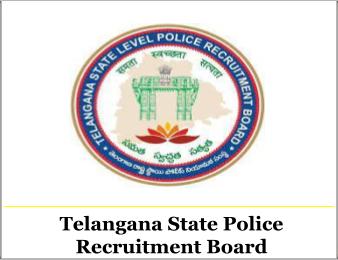(Syllabus) Telangana State Level Police Recruitment Board (TSLPRB) : Exam Syllabus SCT SI IT & CO / PTO / ASI FPB
(Syllabus) Telangana State Level Police Recruitment Board (TSLPRB) : Exam Syllabus SCT SI IT & CO / PTO / ASI FPB
(FOR POST CODE NOS. 31 TO 33)
"FOR WRITTEN Examination"
PAPER I: ENGLISH FOR ALL THE 3 POSTS
- Qualifying Paper in English shall be of Matriculation or equivalent standard. Questions of the standard of SSC / Matriculation seeking to ascertain the Candidate’s knowledge and language skills shall be asked
PART-A: (OBJECTIVE TYPE) (50 QUESTIONS – 25 MARKS – 45 MINUTES)
- Usage, Vocabulary, Grammar, Comprehension and other language skills in the Multiple Choice Questions Format (with 1/4th (25%) negative marks for wrong answers)
PART-B: (DESCRIPTIVE TYPE) (75 MARKS – 2 HOURS 15 MINUTES)
- Descriptive Type Questions covering Writing of Précis, Letters / Reports, Essay, Topical Paragraphs and Reading Comprehension
PAPER II: ARITHMETIC & TEST OF REASONING / MENTAL ABILITY FOR ALL THE 3 POSTS
(OBJECTIVE TYPE) (200 QUESTIONS)
Arithmetic: It shall include questions on problems relating to number system, simple interest, compound interest, ratio & proportion, average, percentage, profit & loss, time & work, work & wages, time & distance, clocks & calendars, partnership, menstruation etc
Test of Reasoning: It shall include questions of both verbal & non-verbal type and include question on analogies, similarities and differences, spatial visualization, spatial orientation, problem solving, analysis, judgment, decision making, visual memory etc.
PAPER III: TECHNICAL PAPER FOR SCT SI (IT&CO)
(OBJECTIVE TYPE) (200 QUESTIONS)
1. Network Theory: Network analysis techniques; Network theorem, transient and steady state sinusoidal response, Transmission criteria: delay and rise time Elmore’s and other definition, effect of cascading. Elements of network synthesis.
2. Electromagnetic Theory: Transmission lines; basic theory, standing waves, matching applications, micro strip lines; Basics of wave guides and resonators; Elements of antenna theory.
3. Electronic Measurements and Instrumentation: Basic concepts, standards and error analysis; Measurements of basic electrical quantities and parameters; Electronic measuring instruments and their principles of working; analog and digital comparison, characteristics, applications. Transducers; Electronic measurements of non-electrical quantities like temperature, pressure, humidity etc. Basics of telemetry for industrial use.
4. Power Electronics: Power Semiconductor devices, Thyristor, Power transistor, MOSFETs Characteristics and operation, AC to DC convertors; 1 – phase and 3 phase DC to DC convertors, AC regulators, Thyristor controlled reactors, switched capacitor networks, Invertors; Single-phase and 3 phase, Pulse width modulation, Sinusoidal modulation with uniform sampling, Switched mode power supplies.
5. Analog Electronic Circuits: Transistor biasing and stabilization, small signal analysis, Power amplifiers, Frequency response, Wide band techniques, Feedback amplifiers, Tuned amplifiers, Oscillators, Rectifiers and Power supplies, Operational Amplifier, other linear integrated circuits and applications, Pulse shaping circuits and waveform generators.
6. Digital Electronic Circuits: Transistors as a switching element; Boolean algebra; simplification of Boolean functions; Karnaught Map and applications; IC logic gates and their characteristics; IC logic families; DTL, TTL, ECL, NMOS, PMOS and CMOS gates and their comparison; Combinational logic circuits; Half adder; full adder, Digital Comparator; Multiplexer De-multiplexer; ROM and their applications; Flip-flops, R-S, JK, D and T flip-flops; Different types of counters and registers; waveform generators; A/D and D/G convertors; Semiconductor memories.
7. Communication Systems and antennas: Basic information theory, Modulation and detection in analogue and digital systems, Sampling and data reconstruction, Quantization & Coding, time division and frequency division multiplexing, Equalisation, Optical Communication; in free space & fiber optic; frequency spectrum analysis, Propagation of signals at HF, VHF, UHF and microwave frequency; Satellite communication, and Mobile communications. Antennas, applications, cellular and PCS antennas.



